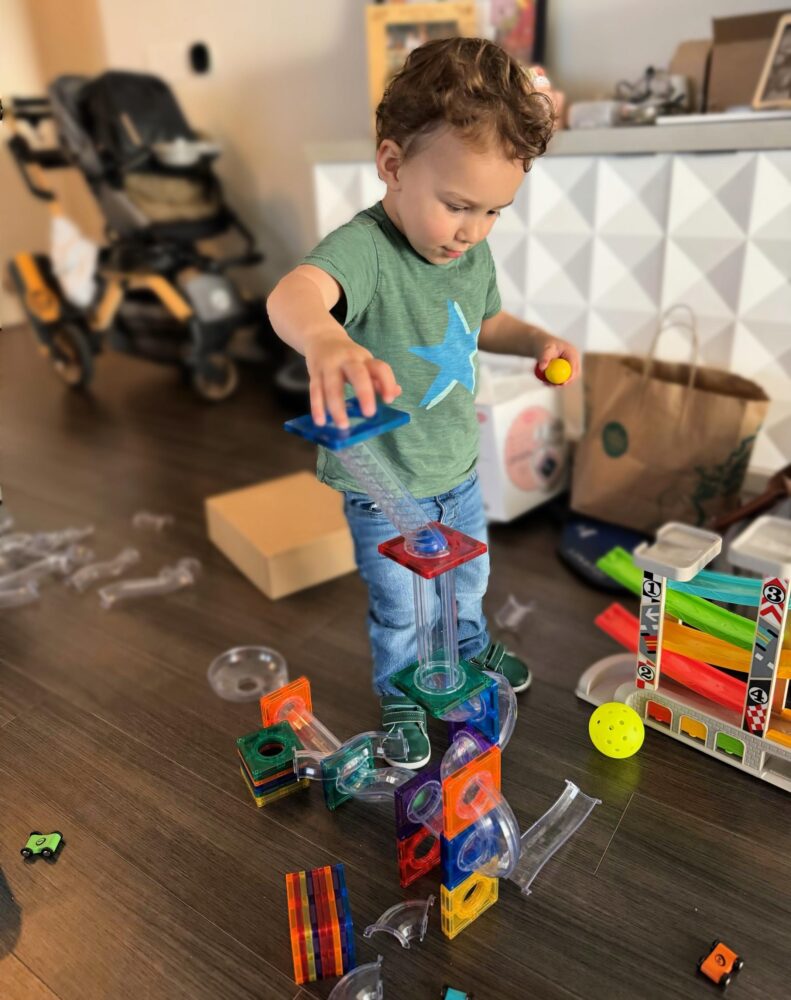Recently, I was fortunate to spend lots of time with my 2-year-old grandson, Rocco. Like many toddlers, he’s incredibly curious, constantly moving, and tenacious about figuring things out (by himself). His latest obsession? A magnetic ball track that he builds and rebuilds in countless combinations. I watched him place the ramps at different angles, troubleshoot when the ball didn’t make it all the way down, or the weight was too heavy from the magnet connectors to hold the structure up, and light up with pure joy and pride when his designs worked. He wasn’t following instructions, he was just following his ideas.

Watching him, I was struck by how naturally agency lives in young children. Before school rules and rubrics, children endlessly explore, take big risks, and learn by doing. They own their learning journey.
And it made me think…how do we protect and nurture that same sense of agency as children get older, especially in the classroom?
Student agency is about giving learners the space and structure to make choices, test ideas, and reflect on their thinking. It’s when students feel that their contributions matter and that they’re not just completing assignments but leading their own learning.
It’s our job to set the table for them to achieve these goals.
In a STEM classroom, student agency shows up in countless ways. It might be a student designing a solution to a real-world problem, like building a stronger bridge out of popsicle sticks or figuring out how to conserve energy at school, and making decisions about how to approach it. It’s the willingness to try an idea, watch it fail, and then rework it without giving up. Agency is also present when students explain their thinking, not just what they built, but why they built it that way, and how their approach changed over time. This kind of self awareness is where growth lives. And perhaps most importantly, agency is seen when students offer each other feedback and encouragement, building on one another’s ideas. These moments shift learners from passive participants to confident problem-solvers, and that transformation is at the heart of what makes STEM so powerful.
But fostering agency isn’t just about giving choices, it’s also about creating a classroom culture where students feel safe to explore and try new things. When children are young, like my grandson, they jump into learning with both feet. They try, they fail, they adjust, all without hesitation. But as students get older, that fearless exploration often gives way to self-consciousness. They start to worry about making mistakes or what their peers might think. That’s why it’s so important to intentionally nurture an environment where risk-taking is encouraged, failure is reframed as learning, and every idea is valued. Agency can only thrive when students feel comfortable being curious.With the high demands on teachers and the standard they must adhere to, it might feel easier to lean into more tightly scripted lessons. But agency doesn’t mean chaos. It means creating a framework where students can think critically, make decisions, and take ownership.
Here’s what that can look like in an elementary STEM classroom:
- Open-Ended Prompts – Instead of “Follow these steps,” ask, “How would you solve this?”
- Design Challenges – Give students a goal but not a set path to reach it.
- Collaborative Learning – Let students learn with and from each other, not just from the front of the room. Create a safe space for students to share ideas, give each other feedback, and celebrate one another’s progress.
- Reflection Tools – Journals, especially digital ones like CoLabs+ help students track their process, and rethink ideas. Build in time for students to pause, think, and explain their choices.

Young learners come into the world ready to explore. Our role as educators is to keep that curiosity alive. When we trust students with their learning, when we give them voice, choice, and meaningful challenges, they rise to the occasion. They grow not just in knowledge, but in confidence, creativity, and joy.
That spark I saw in my grandson, focused, inventive, and thrilled to figure it out for himself, is the same spark we want to see in every classroom. And with the right support, we can.
At MindLabs, we believe students learn best when they’re in the driver’s seat. That’s why our platform was built around open-ended design, problem-solving, and reflection. With tools like the CoLabs+ digital notebook, students can track their thinking, revise their ideas, and even send kudos to classmates, building confidence and community along the way.
Curious to learn more?
👉 Schedule a call to explore how we can support student-led, teacher-guided STEM learning in your school.
